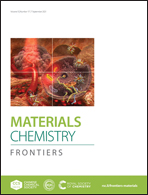Fabrication of biocompatible porous SAIB/silk fibroin scaffolds using ionic liquids
Abstract
Sucrose acetate isobutyrate (SAIB) is a highly viscous hydrogel and presents many challenges for processing when its application in tissue engineering is envisioned. Herein, is proposed an innovative methodology by processing SAIB with ionic liquids (ILs), combined with silk fibroin (SF), to develop SAIB/SF scaffolds. Fourier Transform Infrared analysis confirmed SF and SAIB presence in the structures and the effective IL removal. Moreover, the SAIB/SF scaffolds have a porosity of (87.9 ± 2.9)%, a pore size of (135.3 ± 17.4) μm, and interconnectivity of (95.4 ± 2.6)%, as observed by Scanning electron microscopy and determined by Micro-computed tomography analyses. It was also demonstrated that the produced scaffolds could also support the adhesion of (0.26 ± 0.03) N.s. Moreover, it was shown that the produced scaffolds could also be an excellent support to living cells since when cultured in scaffolds extracts or even in direct contact with cells (fibroblast cell line – L929 and human adipose-derived stem cells, respectively), exhibited excellent cytocompatibility and cell viability. Finally, the hemolysis test proved the scaffolds with hemolytic rates lower than 2%, which is an indicator of blood biocompatibility. Overall, the obtained findings suggest that the produced SAIB/SF scaffolds could be useful for tissue engineering scaffolding products.



 Please wait while we load your content...
Please wait while we load your content...